09 December 2022
Encouraging signs of cooperation in space, and could be key to preventing conflict
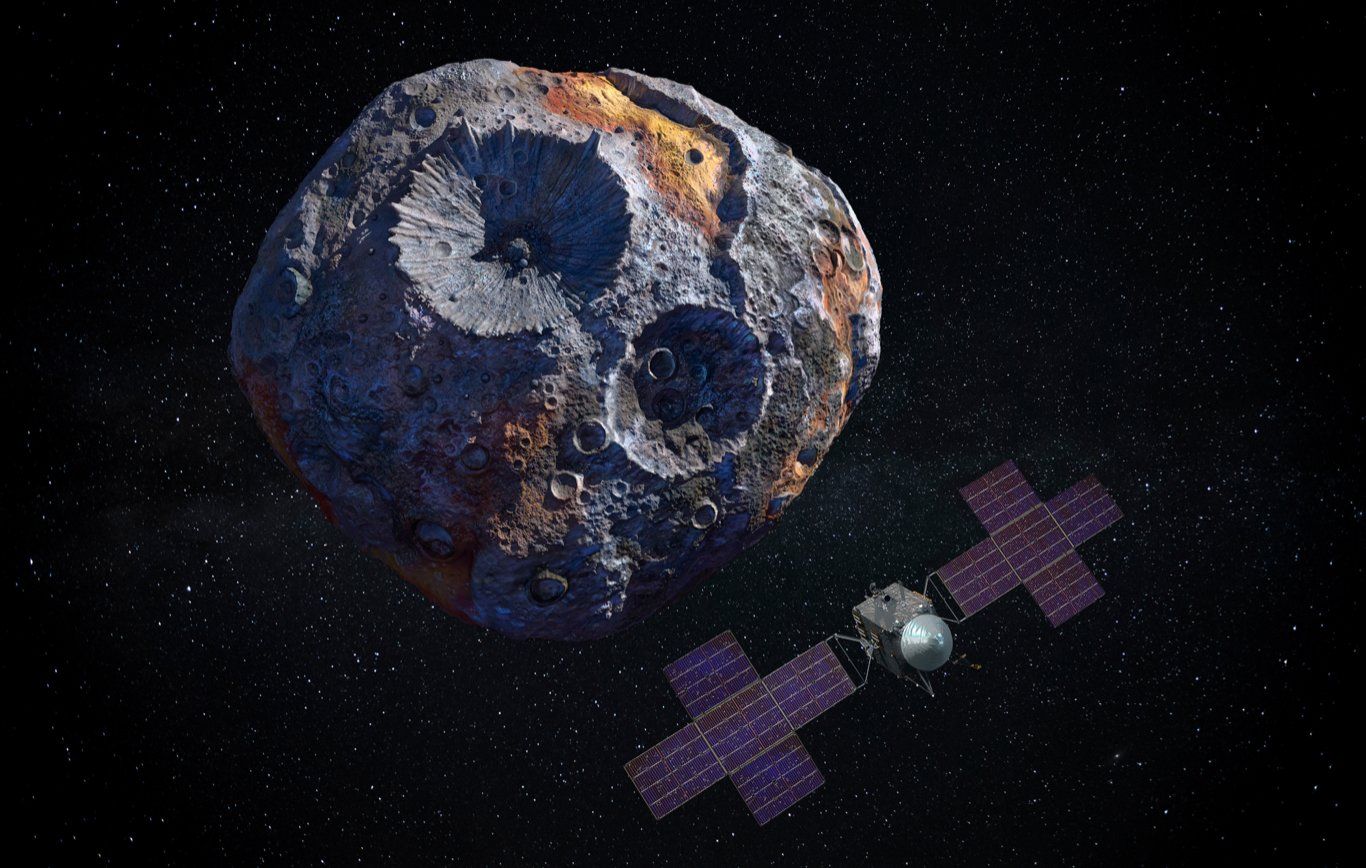
Little universal clarity over issues such as asteroid mining (Image: Adobe)
NASA’s Orion spacecraft is making its way back home, after what has been, so far, a very successful demonstration of their technology, designed to take humankind back to the moon. On the same day that it is due to splashdown in the Pacific, SpaceX are scheduled to launch iSpace’s lunar lander mission, marking the first ever commercial mission to the surface of the moon. The lander is due to eventually reach the lunar surface in April next year. Intuitive Machines and Astrobotic are also looking to send commercial landers to the moon next year.
Technological innovation, driven by increasing demand and efficiency are dictating the pace of growth in the New Space economy. Landing humans once again on the moon may be what captures the imagination of many, and commercialisation of the moon is due to take place with the inaugural iSpace mission. However, the first step towards mass commercialisation of space is already taking place, in Earth orbit. Increasing demand for satellites is driving the growth of an orbital infrastructure, pushing demand for launches, orbital logistics, satellite servicing, debris management and so on.
But with the growth of this new economy comes the increasing risk of conflict, especially as valuable, finite space resources become the target of interest for old and new stakeholders. Innovation continues to outpace law-making, and time is running out in order to build a framework whereby all can peacefully enjoy the benefits of space exploration.
Space-based infrastructure is growing at a pace
Increasing demand for satellite launches is being driven by numerous industries, looking to utilise the advantages of outer space. Direct-to-smartphone connectivity is set drive this demand, also this week, Amazon have announced plans to put its cloud into space, citing fewer cooling issues in space, as well as legal transparency, as key reasons Clint Crosier, Amazon Web Services Aerospace and Satellite Solutions, said that AWS would make the world a better place from its space mission.
Also taking advantage of cloud-based technology is space software provider, Antaris. This week they announced that they have completed launch readiness of the world’s first cloud-built demonstration satellite. The process involved contributors from several different countries, over a ten month period, using only remote, cloud-based software, and could significantly improve the efficiency of satellite development.
With more objects in orbit, traffic management is also becoming an area of increasing importance. This week the US Office of Space Commerce and the Department of Defense has selected 6 firms to develop traffic management solutions for monitoring objects in medium and geostationary Earth orbits. It will be critical that these solutions keep up with the pace of launches, which are set soar in the very near future.
The launch market also faces increasing demand from commercial and governmental sectors, in turn driving the growth of a competitive marketplace. Chinese commercial launch company, Landscape, has prepared for launch of their methane-fuelled Zhuque-2 rocket, seen as an indicator of the progress of the Chinese commercial sector. Furthermore, Blue Origin have been conducting fairing tests of their reusable, New Glenn rocket. It is not confined, but believed that the testing of the fairings may indicate reusability similar to that of a SpaceX Falcon-9. The release of New Glenn could have a significant impact on competition and, even more, drive down costs and increase efficiency in the launch market.
Blue Origin have also announced that they will again bid for a second Artemis lunar lander contract, after previously losing out to SpaceX. Dynetics will also be heading up a team to submit a proposal. Again, competition in this area, with Space X already on the books at NASA, could potentially drive increasing efficiency targets and bring down costs. SpaceX will also be looking to smash some of their previous records this year, by doubling their launch schedule in 2022, compared to last year.

UAE positioning themselves as a mediator in New Space? (Image: Adobe)
New partnerships could help ensure for peaceful space
New Space is becoming more crowded, as established and new players look to reap the benefits of space. Yet at the same time, the resources in space are not endless, and this increases the risk of conflict, as more stakeholders look to claim these resources as their own. It is vital that building constructive relationships keeps pace with technological development, and this week the UAE has been hosting their space forum, aimed at building new bridges and creating healthy partnerships in space.
The event, organised by the UAE Space Agency, is designed to create an international forum where stakeholders can discuss issues that affect growth and innovation in space. NASA chief, Bill Nelson, hailed the event as “a great opportunity…to discuss the important issues facing the incredible growths in space activity and industry” (gulfnews.com, 2022). India’s delegation to the event highlighted that they will look for ways in which to deepen their ties with the UAE in space, and the latter also signed an MoU with the Philippines Space Agency, enhancing their cooperation. The UAE appear to be positioning themselves as somewhat of a possible mediator between the leading space superpowers of the day, and may offer new ways in which to open up dialogue between the rival space powers of the US, China and Russia.
Whilst leading space nations continue to standoff against each other, and geopolitical issues threaten stability in space, China remain committed to building new partnerships. As part of their Chang’e space missions, China has revealed some of the international payloads that they will be carrying. Chang’e 6 will carry scientific instruments from France, Italy and the European Space Agency, and has invited scientists around the world to participate in the Chang’e 7 mission, which will include a lunar orbiter, a lander, a rover, a flying vehicle and multiple scientific instruments, aiming to land at the lunar South Pole.
China are also now already looking towards expanding their new Tiangong space station. They have been open about their plans to invite international partners on the station, and the new core module would be used to provide an additional environment for astronauts, as well as applications for scientific payloads. Tiangong is designed to remain operational for the next ten years, and could be the only station in orbit after ISS retires, and whilst new commercial stations are developed.
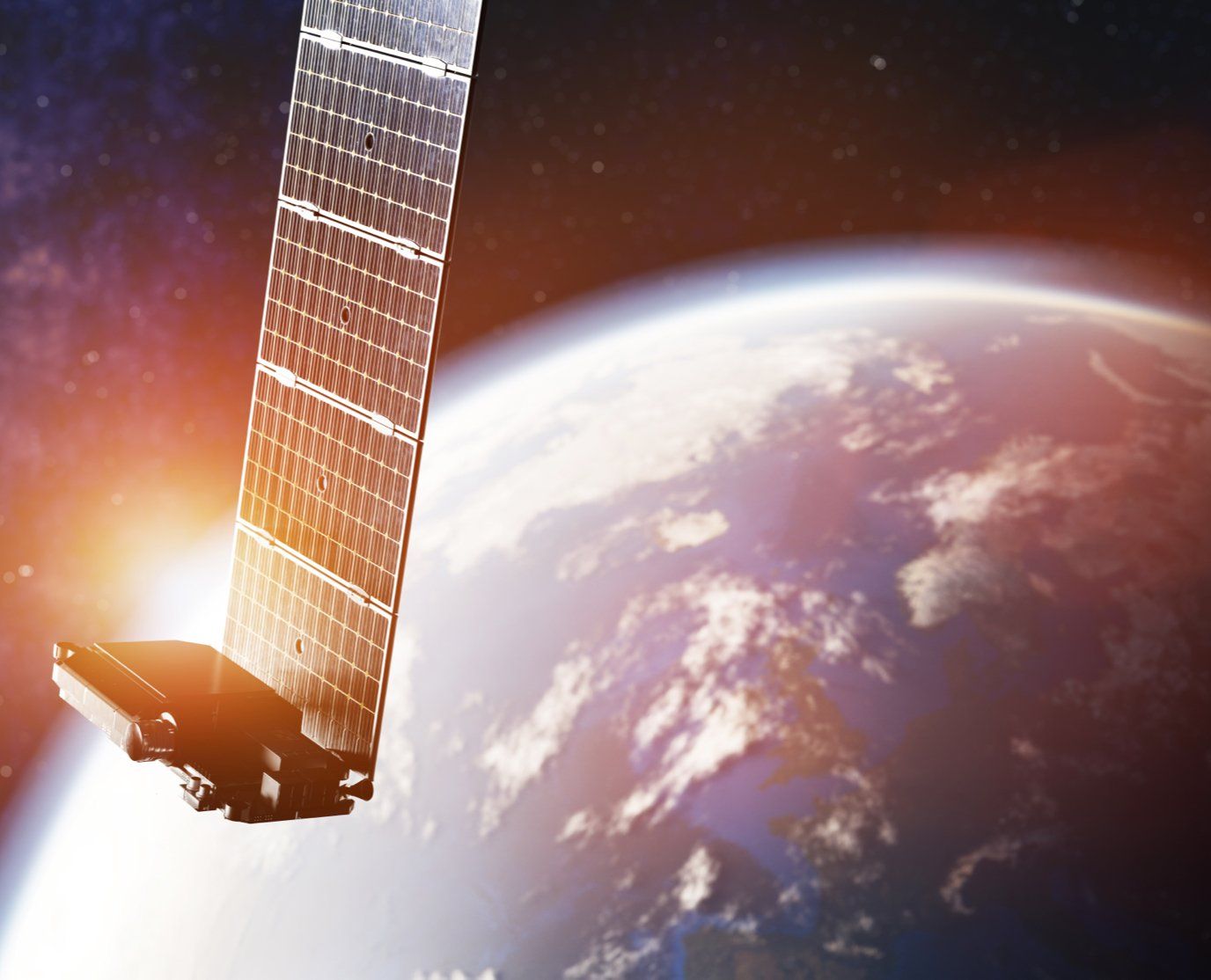
SpaceX establishing "Starshield" for defence market (Image: Adobe)
There is an increasing risk of conflict in orbit and deep space
New partnerships are an encouraging sign at this very critical moment for New Space. Yet at the same time there are concerning signs that space is being geared-up for a more sinister purpose, militarisation and warfare. Chief of US space operations, Gen. B. Chance Saltzman, has this week discussed how the Ukraine conflict has highlited the growing reliance on space technology in warfare, most notably the reliance on satellite technology. He stated that “I think this modern war that we’re seeing play out in Ukraine is just indicative of what we can expect in the future,” (spacenews.com, 2022).
The importance of this technology is reflected by the growing demand for responsive launch providers. Utilising the commercial sector in order to outmanoeuvre opponents is seen as critical, and this week SpaceX have announced that they will establishing their “Starshield” satellite system, aimed at US national security agencies. The system would use the Starlink constellation to provide services, such as surveillance and communications, to US defence organisations. Similarly, Rocket Lab will this week be looking to carry out the first launch of their Electron rocket from US soil, following the announcement that they also will be setting-up a new subsidiary focussed on defence solutions for the US and its allies.
Furthermore, an updated version of the US 2023 National Defense Authorization Act has called for the US department of defence to establish a strategy to protect military satellites, and use their Space Force to work with commercial parters on responsive launch services. Additionally, the US defence innovation unit (DIU) is looking for proposals from the commercial sector to operate payloads in cislunar space, proving that the longing for responsive technology is being used beyond only LEO.
The threat of conflict in outer space is largely caused by a shared interest in harvesting resources, on the moon and also on asteroids. Martin Muller, executive director of science at the Geneva Science and Diplomacy Anticipator, has led a report into which looks at science trends at five, 10 and 25 years, presented at UAE forum this week. The report correctly states that nations are looking into the difficult legislative areas surrounding resource utilisation, and groups such as the Artemis Accords and the Chinese-led ILRS are creating legal frameworks to allow for these activities. However, one key problem remains, and this is that there are no universally accepted rules which comprehensively govern and allow for resource extraction, and ensure peaceful and cooperative behaviour when doing so. The UN Outer Space Treaty makes a good start, but is often seen as outdated, doesn’t account for the new commercial age, and is often open to interpretation.
In the meantime, innovation is quickly outpacing law-making, geopolitical conflict is seeping into space, and nations are preparing for conflict to stretch into LEO and beyond. However, this week did go to show there is cause for optimism, highlighted in the Abu Dhabi Space Debate forum. Newer space nations, such as the UAE may have the drive and ability to bring nations together, and bridge the gap between adversaries. We also see that, despite political and ideological differences, established space nations can have the will and determination to work between rival space nations, I.e. ESA working both on the Artemis project and on the Chang’e missions. There is the drive to make space work for everyone, but we must pick up the pace, because our future in space is fast becoming a reality.
External Links
This Week
*News articles posted here are not property of ANASDA GmbH and belong to their respected owners. Postings here are external links only.
Our future in space
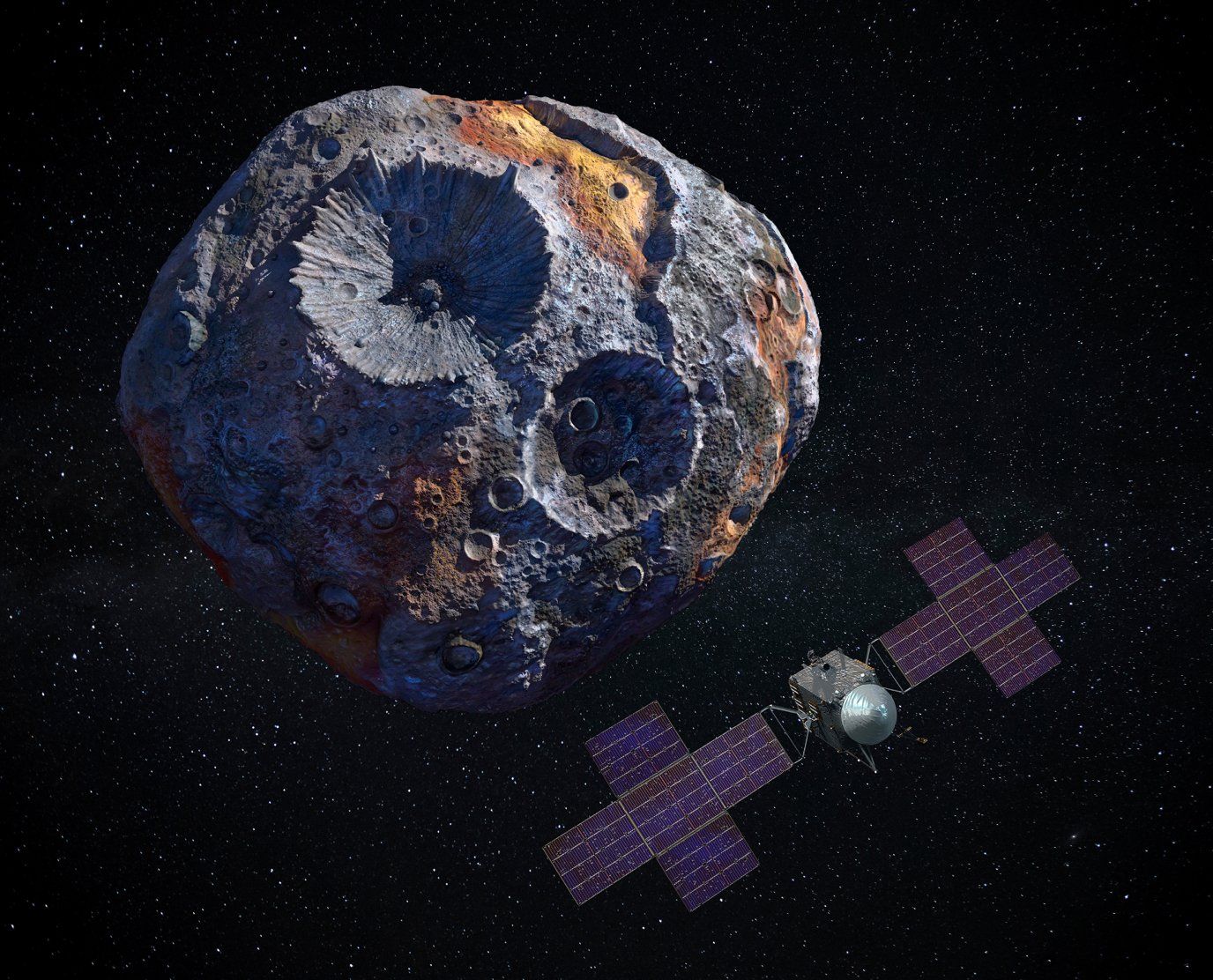
Little universal clarity over issues such as asteroid mining (Image: Adobe)
09 December 2022
Encouraging signs of cooperation in space, and could be key to preventing conflict
NASA’s Orion spacecraft is making its way back home, after what has been, so far, a very successful demonstration of their technology, designed to take humankind back to the moon. On the same day that it is due to splashdown in the Pacific, SpaceX are scheduled to launch iSpace’s lunar lander mission, marking the first ever commercial mission to the surface of the moon. The lander is due to eventually reach the lunar surface in April next year. Intuitive Machines and Astrobotic are also looking to send commercial landers to the moon next year.
Technological innovation, driven by increasing demand and efficiency are dictating the pace of growth in the New Space economy. Landing humans once again on the moon may be what captures the imagination of many, and commercialisation of the moon is due to take place with the inaugural iSpace mission. However, the first step towards mass commercialisation of space is already taking place, in Earth orbit. Increasing demand for satellites is driving the growth of an orbital infrastructure, pushing demand for launches, orbital logistics, satellite servicing, debris management and so on.
But with the growth of this new economy comes the increasing risk of conflict, especially as valuable, finite space resources become the target of interest for old and new stakeholders. Innovation continues to outpace law-making, and time is running out in order to build a framework whereby all can peacefully enjoy the benefits of space exploration.
Space-based infrastructure is growing at a pace
Increasing demand for satellite launches is being driven by numerous industries, looking to utilise the advantages of outer space. Direct-to-smartphone connectivity is set drive this demand, also this week, Amazon have announced plans to put its cloud into space, citing fewer cooling issues in space, as well as legal transparency, as key reasons Clint Crosier, Amazon Web Services Aerospace and Satellite Solutions, said that AWS would make the world a better place from its space mission.
Also taking advantage of cloud-based technology is space software provider, Antaris. This week they announced that they have completed launch readiness of the world’s first cloud-built demonstration satellite. The process involved contributors from several different countries, over a ten month period, using only remote, cloud-based software, and could significantly improve the efficiency of satellite development.
With more objects in orbit, traffic management is also becoming an area of increasing importance. This week the US Office of Space Commerce and the Department of Defense has selected 6 firms to develop traffic management solutions for monitoring objects in medium and geostationary Earth orbits. It will be critical that these solutions keep up with the pace of launches, which are set soar in the very near future.
The launch market also faces increasing demand from commercial and governmental sectors, in turn driving the growth of a competitive marketplace. Chinese commercial launch company, Landscape, has prepared for launch of their methane-fuelled Zhuque-2 rocket, seen as an indicator of the progress of the Chinese commercial sector. Furthermore, Blue Origin have been conducting fairing tests of their reusable, New Glenn rocket. It is not confined, but believed that the testing of the fairings may indicate reusability similar to that of a SpaceX Falcon-9. The release of New Glenn could have a significant impact on competition and, even more, drive down costs and increase efficiency in the launch market.
Blue Origin have also announced that they will again bid for a second Artemis lunar lander contract, after previously losing out to SpaceX. Dynetics will also be heading up a team to submit a proposal. Again, competition in this area, with Space X already on the books at NASA, could potentially drive increasing efficiency targets and bring down costs. SpaceX will also be looking to smash some of their previous records this year, by doubling their launch schedule in 2022, compared to last year.

UAE positioning themselves as a mediator in New Space? (Image: Adobe)
New partnerships could help ensure for peaceful space
New Space is becoming more crowded, as established and new players look to reap the benefits of space. Yet at the same time, the resources in space are not endless, and this increases the risk of conflict, as more stakeholders look to claim these resources as their own. It is vital that building constructive relationships keeps pace with technological development, and this week the UAE has been hosting their space forum, aimed at building new bridges and creating healthy partnerships in space.
The event, organised by the UAE Space Agency, is designed to create an international forum where stakeholders can discuss issues that affect growth and innovation in space. NASA chief, Bill Nelson, hailed the event as “a great opportunity…to discuss the important issues facing the incredible growths in space activity and industry” (gulfnews.com, 2022). India’s delegation to the event highlighted that they will look for ways in which to deepen their ties with the UAE in space, and the latter also signed an MoU with the Philippines Space Agency, enhancing their cooperation. The UAE appear to be positioning themselves as somewhat of a possible mediator between the leading space superpowers of the day, and may offer new ways in which to open up dialogue between the rival space powers of the US, China and Russia.
Whilst leading space nations continue to standoff against each other, and geopolitical issues threaten stability in space, China remain committed to building new partnerships. As part of their Chang’e space missions, China has revealed some of the international payloads that they will be carrying. Chang’e 6 will carry scientific instruments from France, Italy and the European Space Agency, and has invited scientists around the world to participate in the Chang’e 7 mission, which will include a lunar orbiter, a lander, a rover, a flying vehicle and multiple scientific instruments, aiming to land at the lunar South Pole.
China are also now already looking towards expanding their new Tiangong space station. They have been open about their plans to invite international partners on the station, and the new core module would be used to provide an additional environment for astronauts, as well as applications for scientific payloads. Tiangong is designed to remain operational for the next ten years, and could be the only station in orbit after ISS retires, and whilst new commercial stations are developed.
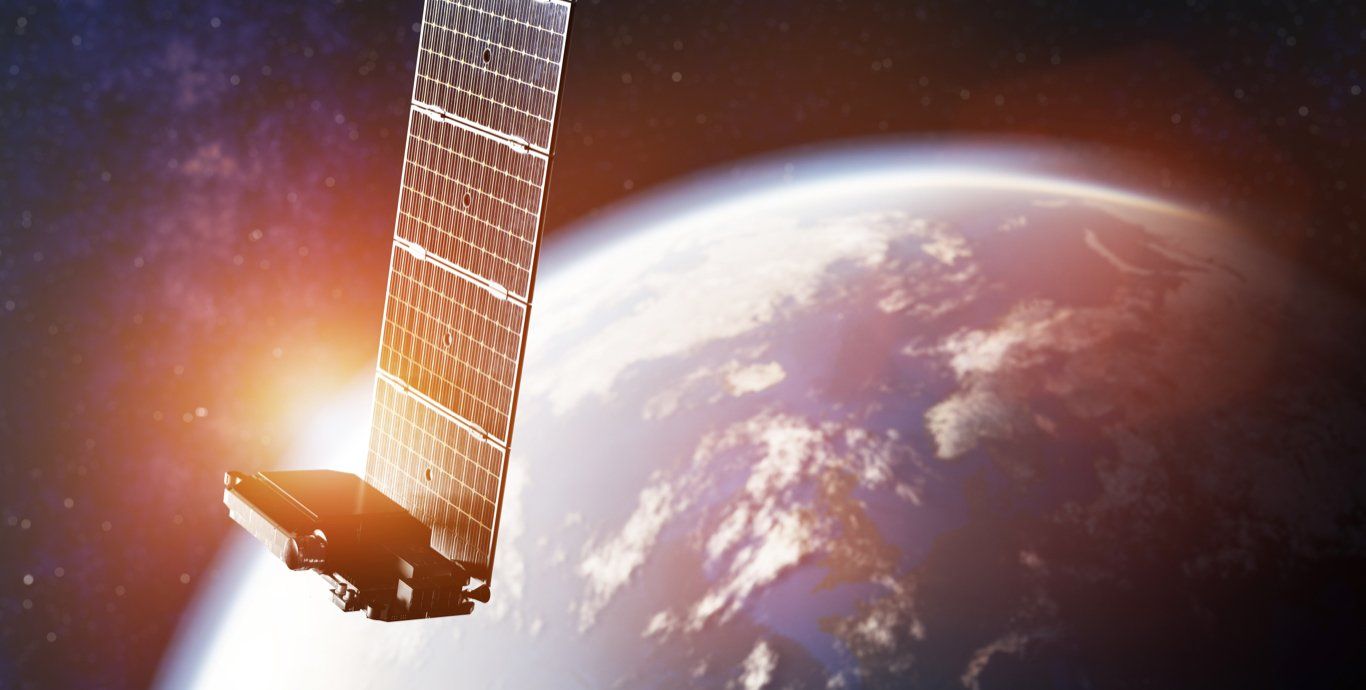
SpaceX establishing "Starshield" for defence market (Image: Adobe)
There is an increasing risk of conflict in orbit and deep space
New partnerships are an encouraging sign at this very critical moment for New Space. Yet at the same time there are concerning signs that space is being geared-up for a more sinister purpose, militarisation and warfare. Chief of US space operations, Gen. B. Chance Saltzman, has this week discussed how the Ukraine conflict has highlited the growing reliance on space technology in warfare, most notably the reliance on satellite technology. He stated that “I think this modern war that we’re seeing play out in Ukraine is just indicative of what we can expect in the future,” (spacenews.com, 2022).
The importance of this technology is reflected by the growing demand for responsive launch providers. Utilising the commercial sector in order to outmanoeuvre opponents is seen as critical, and this week SpaceX have announced that they will establishing their “Starshield” satellite system, aimed at US national security agencies. The system would use the Starlink constellation to provide services, such as surveillance and communications, to US defence organisations. Similarly, Rocket Lab will this week be looking to carry out the first launch of their Electron rocket from US soil, following the announcement that they also will be setting-up a new subsidiary focussed on defence solutions for the US and its allies.
Furthermore, an updated version of the US 2023 National Defense Authorization Act has called for the US department of defence to establish a strategy to protect military satellites, and use their Space Force to work with commercial parters on responsive launch services. Additionally, the US defence innovation unit (DIU) is looking for proposals from the commercial sector to operate payloads in cislunar space, proving that the longing for responsive technology is being used beyond only LEO.
The threat of conflict in outer space is largely caused by a shared interest in harvesting resources, on the moon and also on asteroids. Martin Muller, executive director of science at the Geneva Science and Diplomacy Anticipator, has led a report into which looks at science trends at five, 10 and 25 years, presented at UAE forum this week. The report correctly states that nations are looking into the difficult legislative areas surrounding resource utilisation, and groups such as the Artemis Accords and the Chinese-led ILRS are creating legal frameworks to allow for these activities. However, one key problem remains, and this is that there are no universally accepted rules which comprehensively govern and allow for resource extraction, and ensure peaceful and cooperative behaviour when doing so. The UN Outer Space Treaty makes a good start, but is often seen as outdated, doesn’t account for the new commercial age, and is often open to interpretation.
In the meantime, innovation is quickly outpacing law-making, geopolitical conflict is seeping into space, and nations are preparing for conflict to stretch into LEO and beyond. However, this week did go to show there is cause for optimism, highlighted in the Abu Dhabi Space Debate forum. Newer space nations, such as the UAE may have the drive and ability to bring nations together, and bridge the gap between adversaries. We also see that, despite political and ideological differences, established space nations can have the will and determination to work between rival space nations, I.e. ESA working both on the Artemis project and on the Chang’e missions. There is the drive to make space work for everyone, but we must pick up the pace, because our future in space is fast becoming a reality.
Share this article
External Links
This Week
*News articles posted here are not property of ANASDA GmbH and belong to their respected owners. Postings here are external links only.
09 Dec 2022
Encouraging signs of cooperation in space, and could be key to preventing conflict
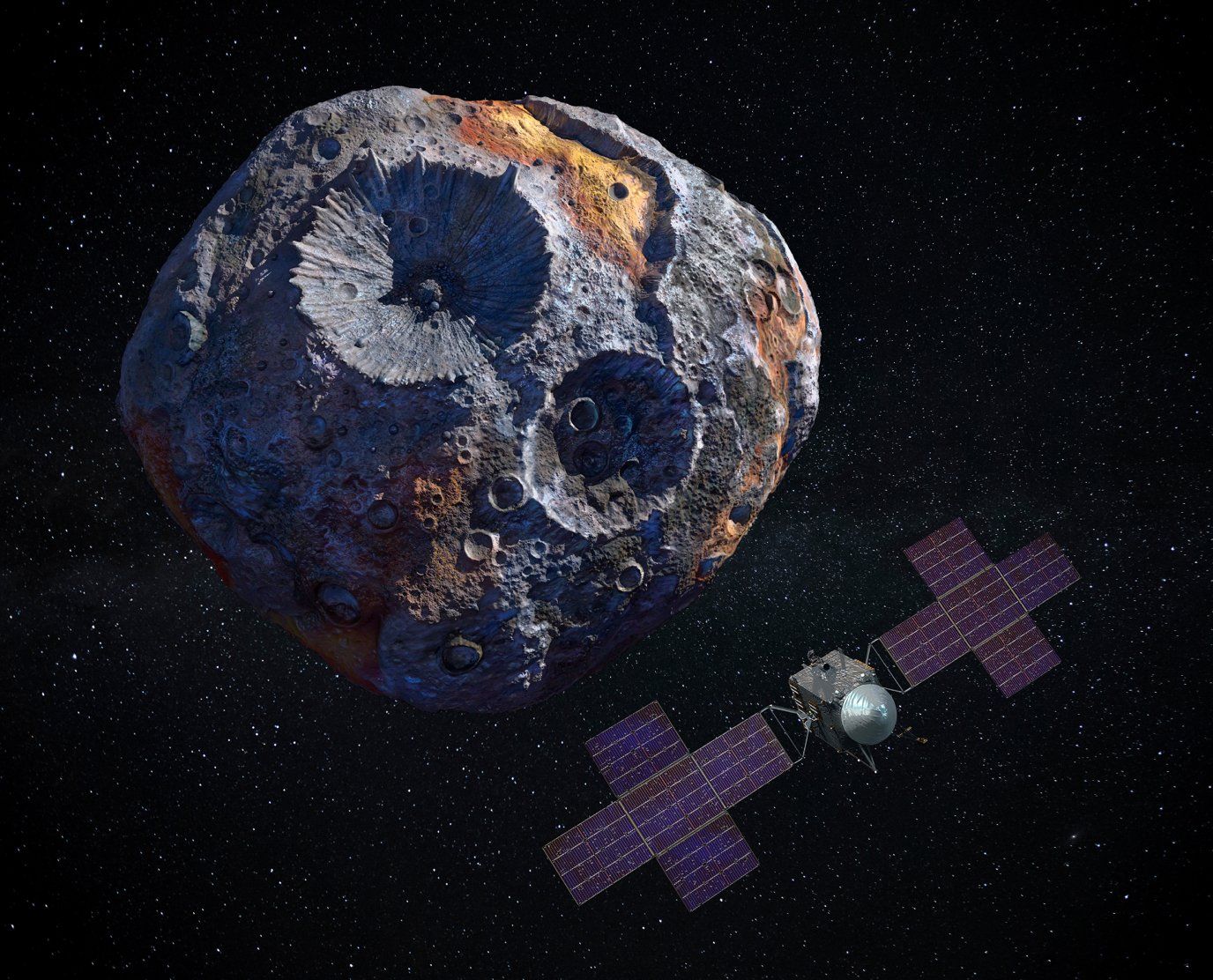
Little universal clarity over issues such as asteroid mining (Image: Adobe)
NASA’s Orion spacecraft is making its way back home, after what has been, so far, a very successful demonstration of their technology, designed to take humankind back to the moon. On the same day that it is due to splashdown in the Pacific, SpaceX are scheduled to launch iSpace’s lunar lander mission, marking the first ever commercial mission to the surface of the moon. The lander is due to eventually reach the lunar surface in April next year. Intuitive Machines and Astrobotic are also looking to send commercial landers to the moon next year.
Technological innovation, driven by increasing demand and efficiency are dictating the pace of growth in the New Space economy. Landing humans once again on the moon may be what captures the imagination of many, and commercialisation of the moon is due to take place with the inaugural iSpace mission. However, the first step towards mass commercialisation of space is already taking place, in Earth orbit. Increasing demand for satellites is driving the growth of an orbital infrastructure, pushing demand for launches, orbital logistics, satellite servicing, debris management and so on.
But with the growth of this new economy comes the increasing risk of conflict, especially as valuable, finite space resources become the target of interest for old and new stakeholders. Innovation continues to outpace law-making, and time is running out in order to build a framework whereby all can peacefully enjoy the benefits of space exploration.
Space-based infrastructure is growing at a pace
Increasing demand for satellite launches is being driven by numerous industries, looking to utilise the advantages of outer space. Direct-to-smartphone connectivity is set drive this demand, also this week, Amazon have announced plans to put its cloud into space, citing fewer cooling issues in space, as well as legal transparency, as key reasons Clint Crosier, Amazon Web Services Aerospace and Satellite Solutions, said that AWS would make the world a better place from its space mission.
Also taking advantage of cloud-based technology is space software provider, Antaris. This week they announced that they have completed launch readiness of the world’s first cloud-built demonstration satellite. The process involved contributors from several different countries, over a ten month period, using only remote, cloud-based software, and could significantly improve the efficiency of satellite development.
With more objects in orbit, traffic management is also becoming an area of increasing importance. This week the US Office of Space Commerce and the Department of Defense has selected 6 firms to develop traffic management solutions for monitoring objects in medium and geostationary Earth orbits. It will be critical that these solutions keep up with the pace of launches, which are set soar in the very near future.
The launch market also faces increasing demand from commercial and governmental sectors, in turn driving the growth of a competitive marketplace. Chinese commercial launch company, Landscape, has prepared for launch of their methane-fuelled Zhuque-2 rocket, seen as an indicator of the progress of the Chinese commercial sector. Furthermore, Blue Origin have been conducting fairing tests of their reusable, New Glenn rocket. It is not confined, but believed that the testing of the fairings may indicate reusability similar to that of a SpaceX Falcon-9. The release of New Glenn could have a significant impact on competition and, even more, drive down costs and increase efficiency in the launch market.
Blue Origin have also announced that they will again bid for a second Artemis lunar lander contract, after previously losing out to SpaceX. Dynetics will also be heading up a team to submit a proposal. Again, competition in this area, with Space X already on the books at NASA, could potentially drive increasing efficiency targets and bring down costs. SpaceX will also be looking to smash some of their previous records this year, by doubling their launch schedule in 2022, compared to last year.

UAE positioning themselves as a mediator in New Space? (Image: Adobe)
New partnerships could help ensure for peaceful space
New Space is becoming more crowded, as established and new players look to reap the benefits of space. Yet at the same time, the resources in space are not endless, and this increases the risk of conflict, as more stakeholders look to claim these resources as their own. It is vital that building constructive relationships keeps pace with technological development, and this week the UAE has been hosting their space forum, aimed at building new bridges and creating healthy partnerships in space.
The event, organised by the UAE Space Agency, is designed to create an international forum where stakeholders can discuss issues that affect growth and innovation in space. NASA chief, Bill Nelson, hailed the event as “a great opportunity…to discuss the important issues facing the incredible growths in space activity and industry” (gulfnews.com, 2022). India’s delegation to the event highlighted that they will look for ways in which to deepen their ties with the UAE in space, and the latter also signed an MoU with the Philippines Space Agency, enhancing their cooperation. The UAE appear to be positioning themselves as somewhat of a possible mediator between the leading space superpowers of the day, and may offer new ways in which to open up dialogue between the rival space powers of the US, China and Russia.
Whilst leading space nations continue to standoff against each other, and geopolitical issues threaten stability in space, China remain committed to building new partnerships. As part of their Chang’e space missions, China has revealed some of the international payloads that they will be carrying. Chang’e 6 will carry scientific instruments from France, Italy and the European Space Agency, and has invited scientists around the world to participate in the Chang’e 7 mission, which will include a lunar orbiter, a lander, a rover, a flying vehicle and multiple scientific instruments, aiming to land at the lunar South Pole.
China are also now already looking towards expanding their new Tiangong space station. They have been open about their plans to invite international partners on the station, and the new core module would be used to provide an additional environment for astronauts, as well as applications for scientific payloads. Tiangong is designed to remain operational for the next ten years, and could be the only station in orbit after ISS retires, and whilst new commercial stations are developed.
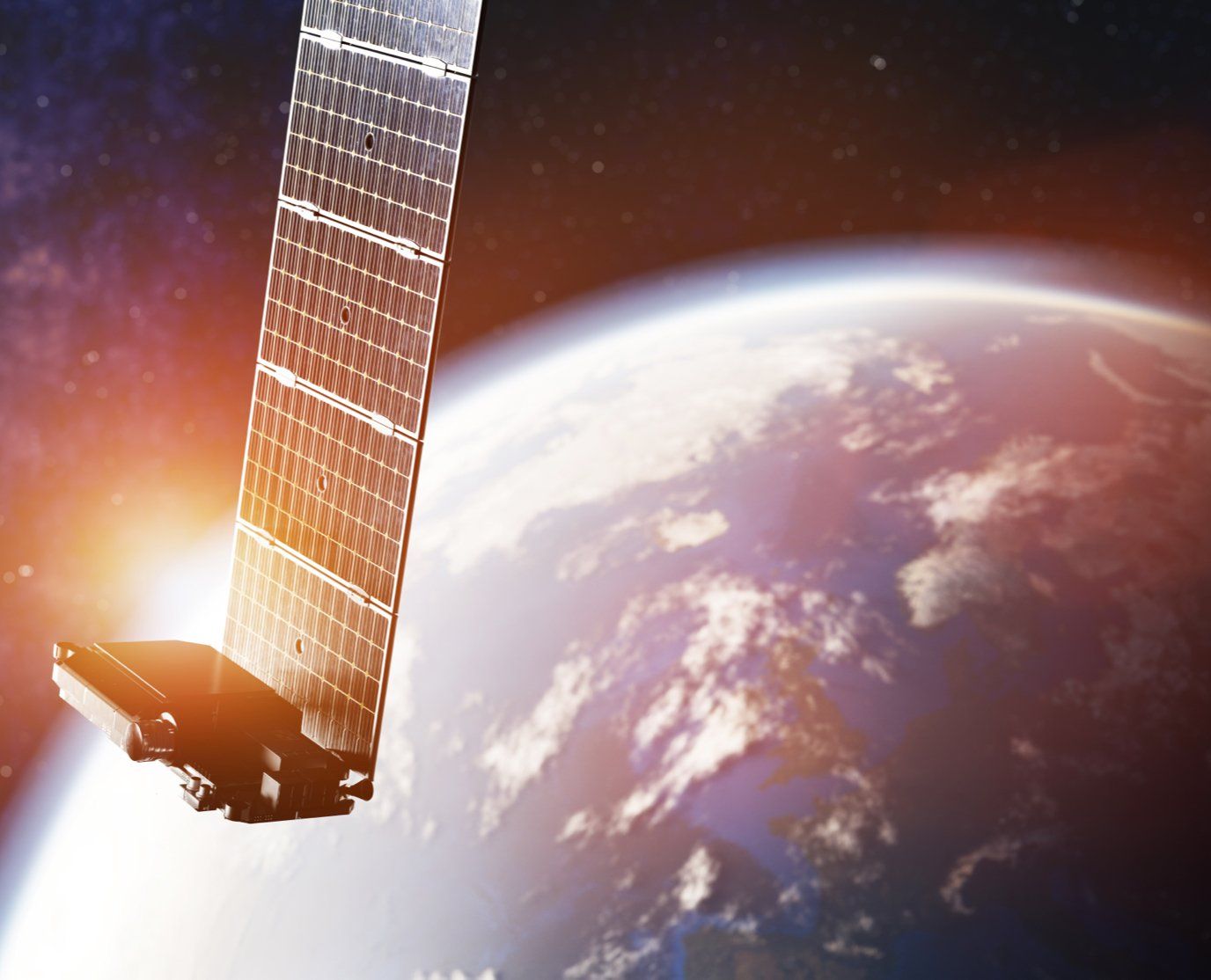
SpaceX establishing "Starshield" for defence market (Image: Adobe)
There is an increasing risk of conflict in orbit and deep space
New partnerships are an encouraging sign at this very critical moment for New Space. Yet at the same time there are concerning signs that space is being geared-up for a more sinister purpose, militarisation and warfare. Chief of US space operations, Gen. B. Chance Saltzman, has this week discussed how the Ukraine conflict has highlited the growing reliance on space technology in warfare, most notably the reliance on satellite technology. He stated that “I think this modern war that we’re seeing play out in Ukraine is just indicative of what we can expect in the future,” (spacenews.com, 2022).
The importance of this technology is reflected by the growing demand for responsive launch providers. Utilising the commercial sector in order to outmanoeuvre opponents is seen as critical, and this week SpaceX have announced that they will establishing their “Starshield” satellite system, aimed at US national security agencies. The system would use the Starlink constellation to provide services, such as surveillance and communications, to US defence organisations. Similarly, Rocket Lab will this week be looking to carry out the first launch of their Electron rocket from US soil, following the announcement that they also will be setting-up a new subsidiary focussed on defence solutions for the US and its allies.
Furthermore, an updated version of the US 2023 National Defense Authorization Act has called for the US department of defence to establish a strategy to protect military satellites, and use their Space Force to work with commercial parters on responsive launch services. Additionally, the US defence innovation unit (DIU) is looking for proposals from the commercial sector to operate payloads in cislunar space, proving that the longing for responsive technology is being used beyond only LEO.
The threat of conflict in outer space is largely caused by a shared interest in harvesting resources, on the moon and also on asteroids. Martin Muller, executive director of science at the Geneva Science and Diplomacy Anticipator, has led a report into which looks at science trends at five, 10 and 25 years, presented at UAE forum this week. The report correctly states that nations are looking into the difficult legislative areas surrounding resource utilisation, and groups such as the Artemis Accords and the Chinese-led ILRS are creating legal frameworks to allow for these activities. However, one key problem remains, and this is that there are no universally accepted rules which comprehensively govern and allow for resource extraction, and ensure peaceful and cooperative behaviour when doing so. The UN Outer Space Treaty makes a good start, but is often seen as outdated, doesn’t account for the new commercial age, and is often open to interpretation.
In the meantime, innovation is quickly outpacing law-making, geopolitical conflict is seeping into space, and nations are preparing for conflict to stretch into LEO and beyond. However, this week did go to show there is cause for optimism, highlighted in the Abu Dhabi Space Debate forum. Newer space nations, such as the UAE may have the drive and ability to bring nations together, and bridge the gap between adversaries. We also see that, despite political and ideological differences, established space nations can have the will and determination to work between rival space nations, I.e. ESA working both on the Artemis project and on the Chang’e missions. There is the drive to make space work for everyone, but we must pick up the pace, because our future in space is fast becoming a reality.
Share this article
External Links
This Week
*News articles posted here are not property of ANASDA GmbH and belong to their respected owners. Postings here are external links only.


































